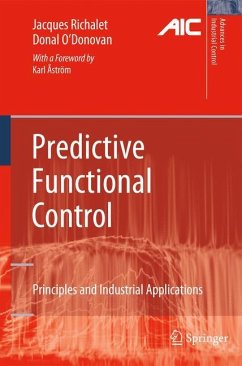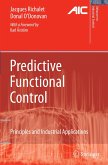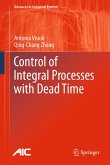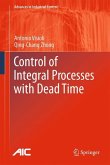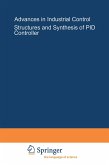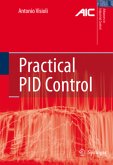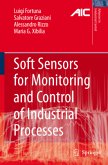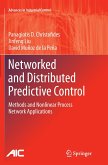The demands of the modern economic climate have led to a dramatic increase in the industrial application of model-based predictive control. Apart from PID, predictive control is probably the most popular control approach in use today. Predictive functional control (PFC) was first used to develop a model-based predictive controller that was easy to understand, implement and tune from an instrumentation engineer's perspective. In the forty years since, there have been thousands of successful applications of PFC controllers in a large and diverse group of industries. Predictive Functional Control provides readers with: a fundamental understanding of the principles associated with PFC; the basic PFC control equations to be implemented in all programmable logic controllers or digital control systems in block programming form; and tuning rules and implementation procedures. Some new features arising from the needs of the process industries are reported along with many examples of industrial applications.
first industrial application of MPC was in 1973. A key motivation was to provide better performance than could be obtained with the widely-used PID controller whilst making it easy to replace the PID controller unit or module with his new algorithm. It was the advent of digital control technology and the use of software control algorithms that made this replacement easier and more acceptable to process engineers. A decade of industrial practice with PFC was reported in the archival literature by Jacques Richalet et al. in 1978 in an important seminal Automatica paper. Around this time, Cutler and Ramaker published the dynamic matrix control algorithm that also used knowledge of future reference signals to determine a sequence of control signal adjustment. Thus, the theoretical and practical development of predictive control methods was underway and subsequent developments included those of generalized predictive control, and the whole armoury of MPC methods. Jacques Richalet's approach to PFC was to seek an algorithm that was: - easy to understand; - easy to install; - easy to tune and optimise. He sought a new modular control algorithm that could be readily used by the control-technician engineer or the control-instrument engineer. It goes without saying that this objective also forms a good market strategy.
first industrial application of MPC was in 1973. A key motivation was to provide better performance than could be obtained with the widely-used PID controller whilst making it easy to replace the PID controller unit or module with his new algorithm. It was the advent of digital control technology and the use of software control algorithms that made this replacement easier and more acceptable to process engineers. A decade of industrial practice with PFC was reported in the archival literature by Jacques Richalet et al. in 1978 in an important seminal Automatica paper. Around this time, Cutler and Ramaker published the dynamic matrix control algorithm that also used knowledge of future reference signals to determine a sequence of control signal adjustment. Thus, the theoretical and practical development of predictive control methods was underway and subsequent developments included those of generalized predictive control, and the whole armoury of MPC methods. Jacques Richalet's approach to PFC was to seek an algorithm that was: - easy to understand; - easy to install; - easy to tune and optimise. He sought a new modular control algorithm that could be readily used by the control-technician engineer or the control-instrument engineer. It goes without saying that this objective also forms a good market strategy.

